Sitka spruce & Norway spruce
All photos taken by the author. Last updated January 4, 2021.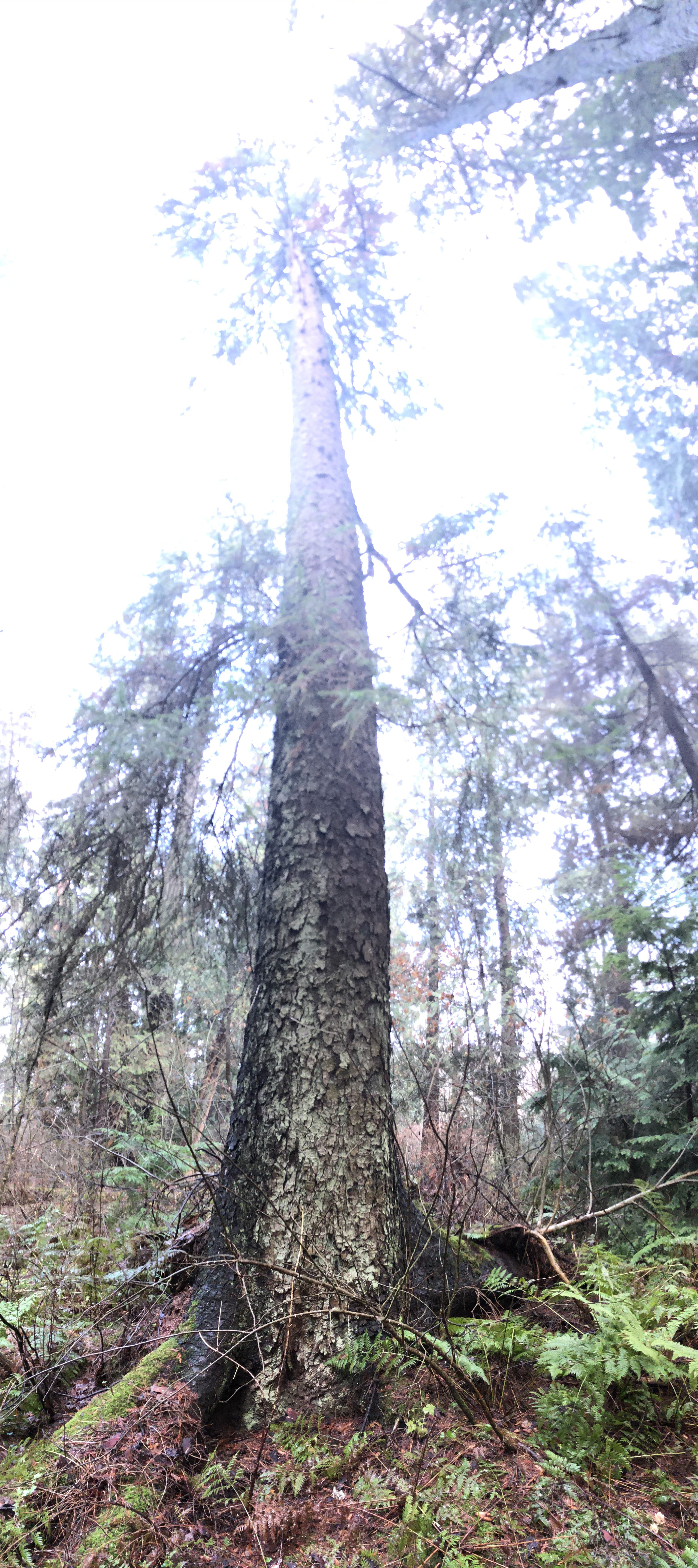
A Sitka spruce (Picea sichensis) tree near Burnaby Lake. The easiest way to identify these trees is to first look for fallen cones and needles then look for the scaly bark on nearby trees.
We have a cuckoo clock, given to my eldest son by his great-grandfather. We always called the weights underneath “pinecones” until I started my obsessive learning about trees. I now know those are not pinecones, but spruce cones. And, to be more specific, they really look like Norway spruce cones.

From reading, I know that the native spruce tree we are most likely to come across is the Sitka spruce tree. However, in our urban area I have found many more Norway spruce trees than Sitka spruce trees, probably due to the Sitka spruce’s huge size: typical specimens are over 70 m tall when mature and the tallest known Sitka spruce trees are over 90 m in height! Norway spruce trees, for comparison, grow to about 40 m tall.
Like most conifers, I found it easiest to look for the cones, twigs, and needles on the ground before finding Sitka spruce trees.

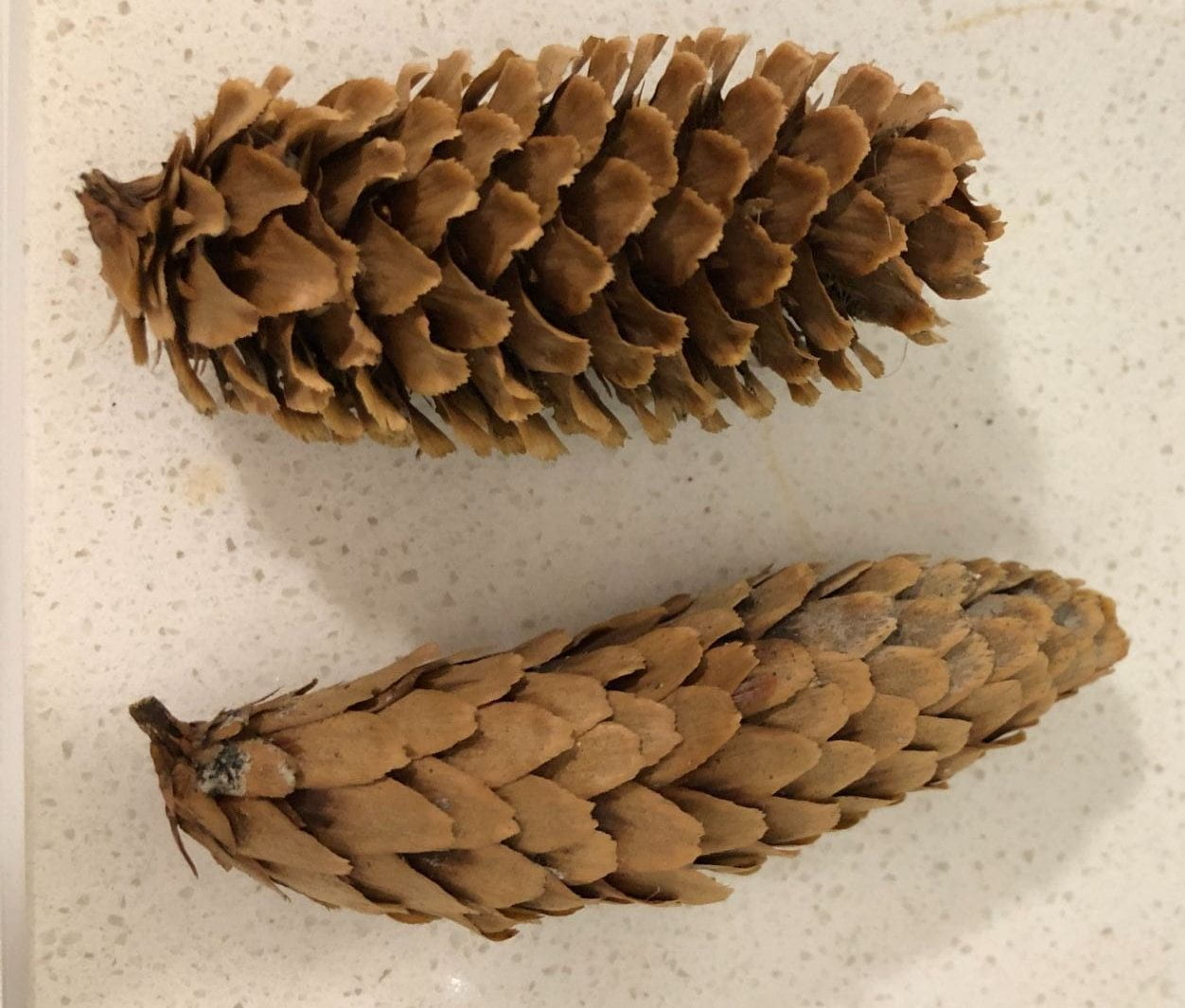
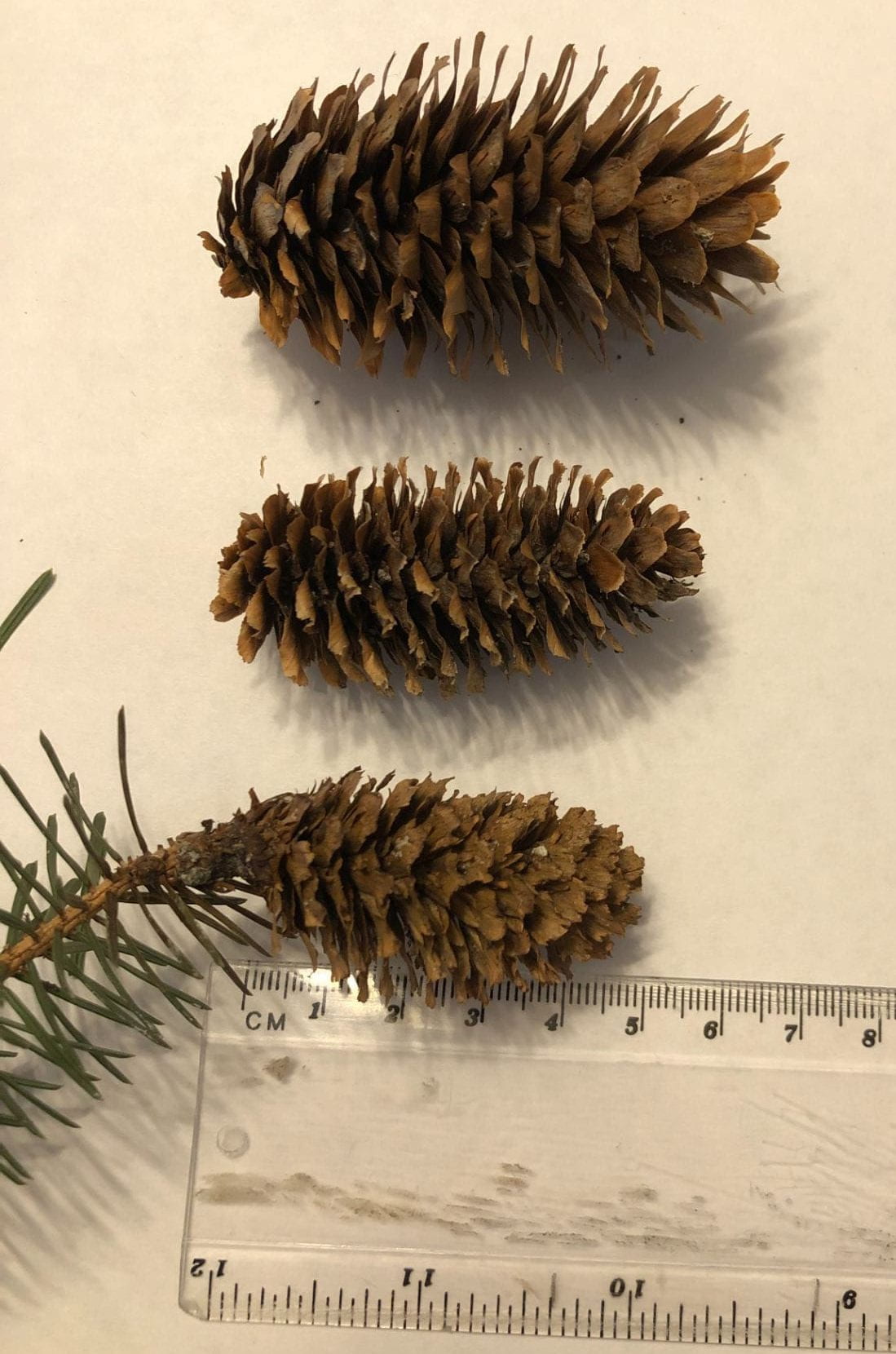
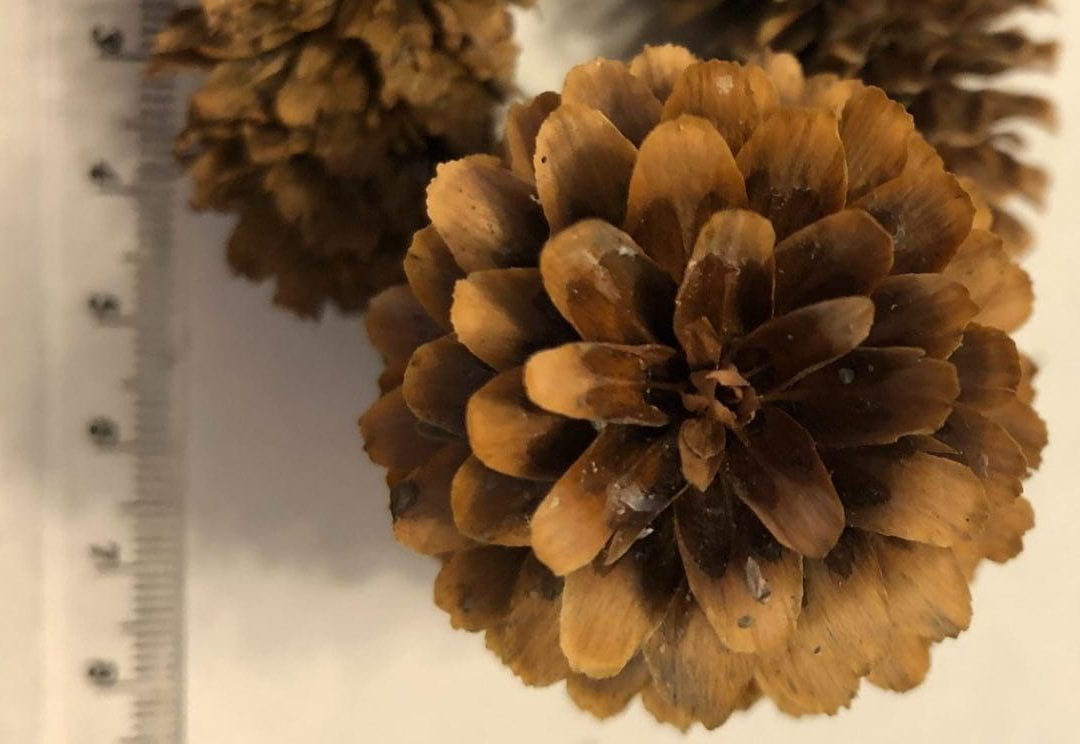
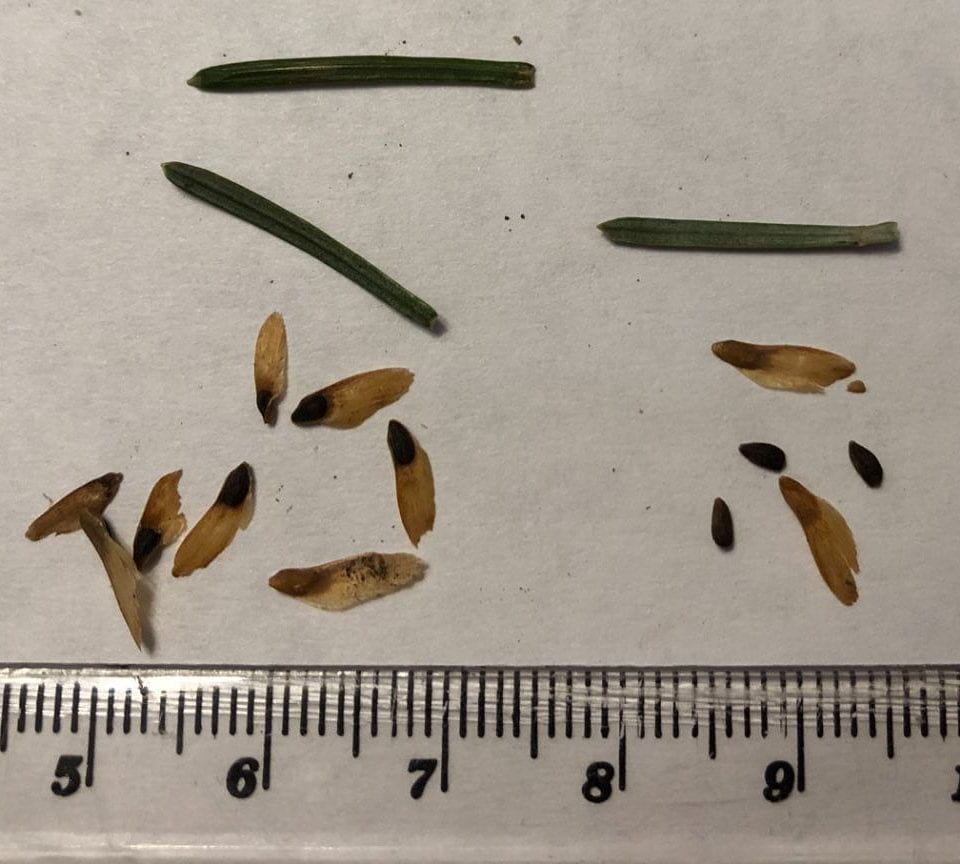
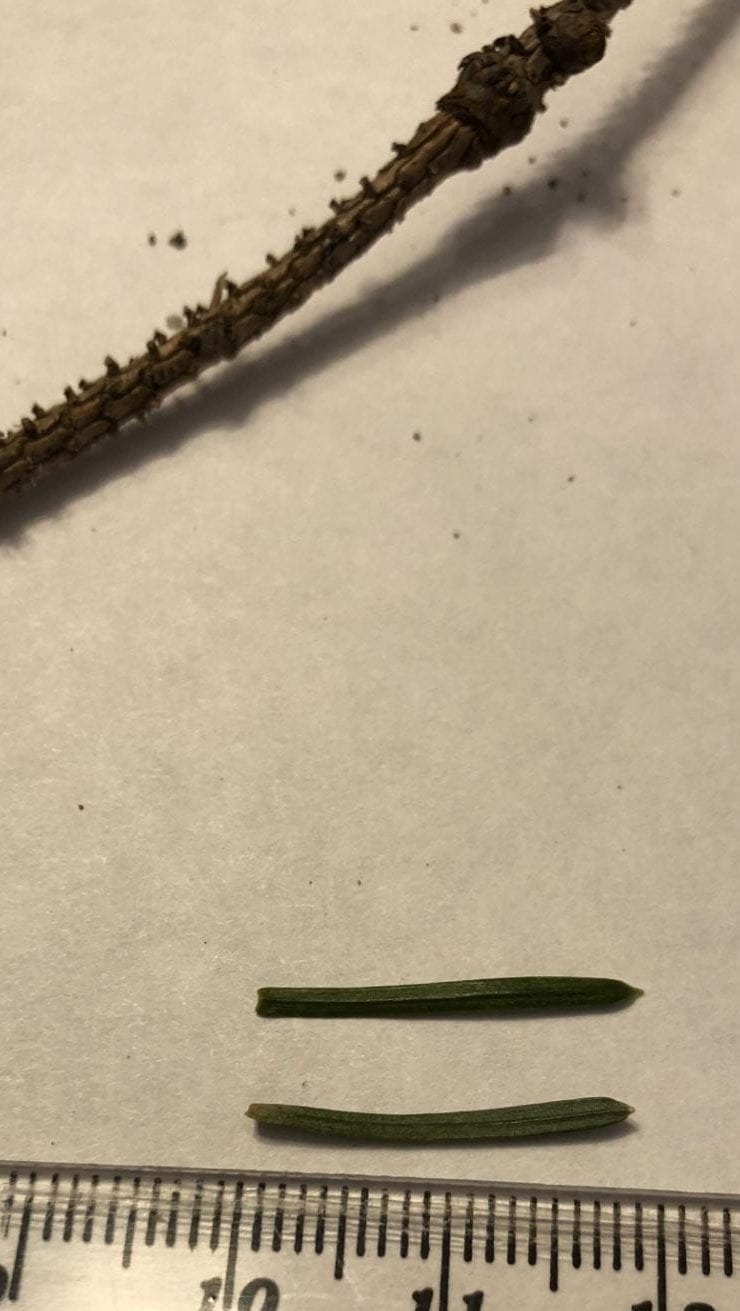

Once you’ve found some cones, and possible twigs and needles, look at nearby trees for the characteristic bark breaking into scales. I have twice found Sitka spruce cones without being able to identify the tree that they came from.

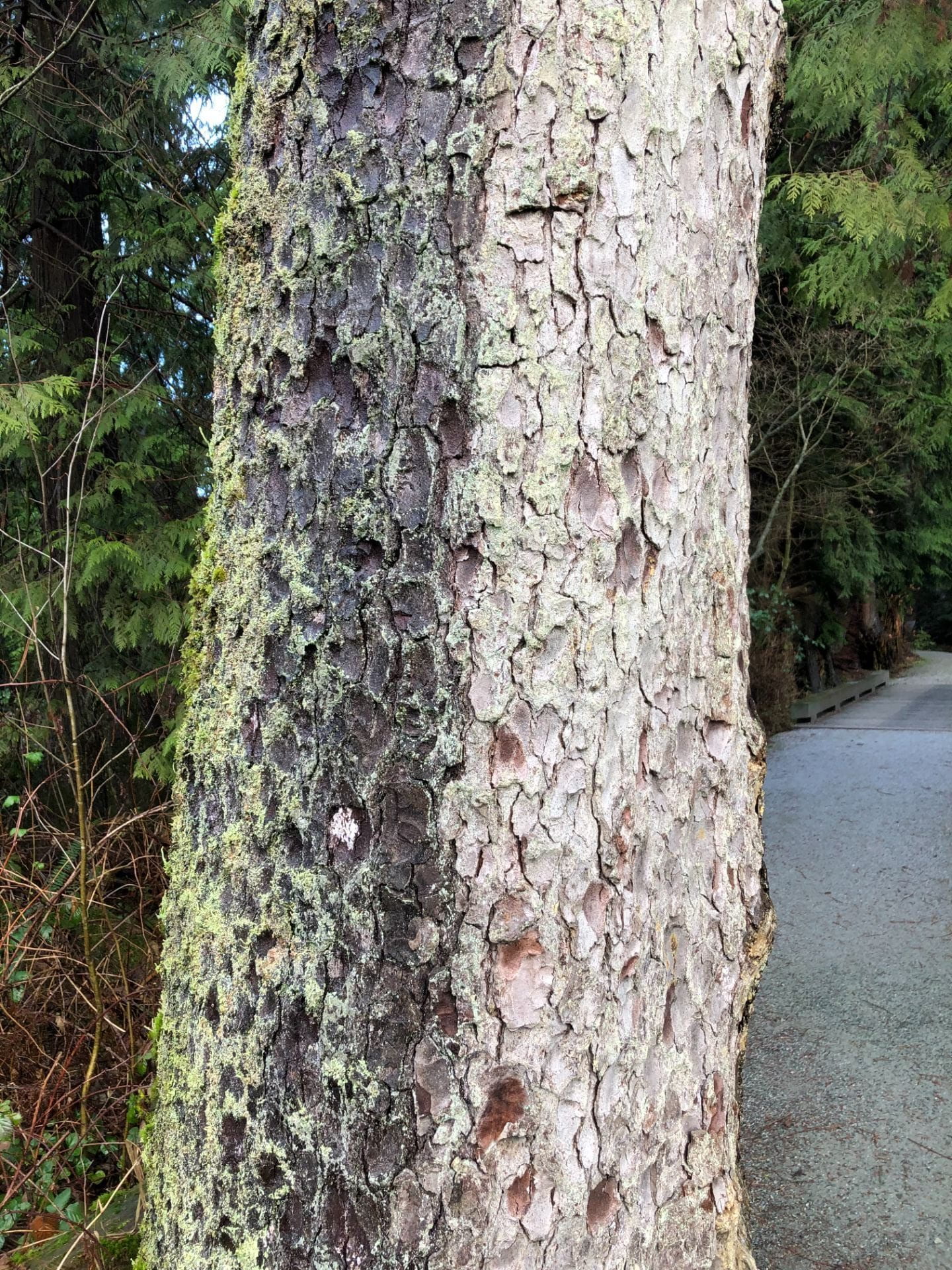
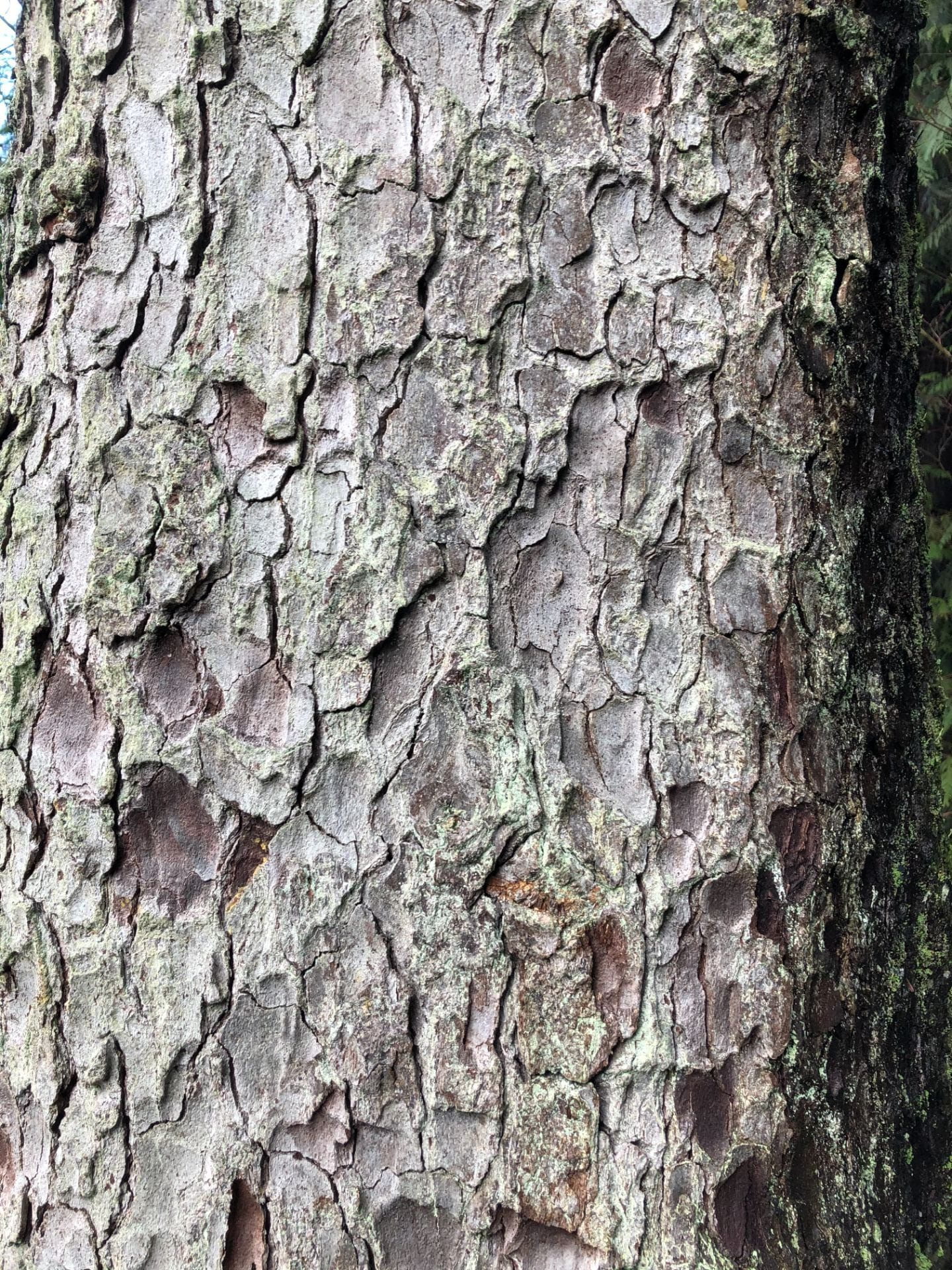


Sitka spruce trees were used in many ways by British Columbia’s First Peoples. The wood, bark, roots, gum, and branches were all used by many different groups, for everything from house boards, roofing, flooring, and siding, to baskets and rope. Coastal First Peoples used the cambium and phloem (layer of the tree between the wood and bark) as food. The hardened pitch could be chewed. For more information please see Nancy J. Turner’s books Plant Technology of First Peoples in British Columbia and Food Plants of Coastal First Peoples.
____________________________________________________________________
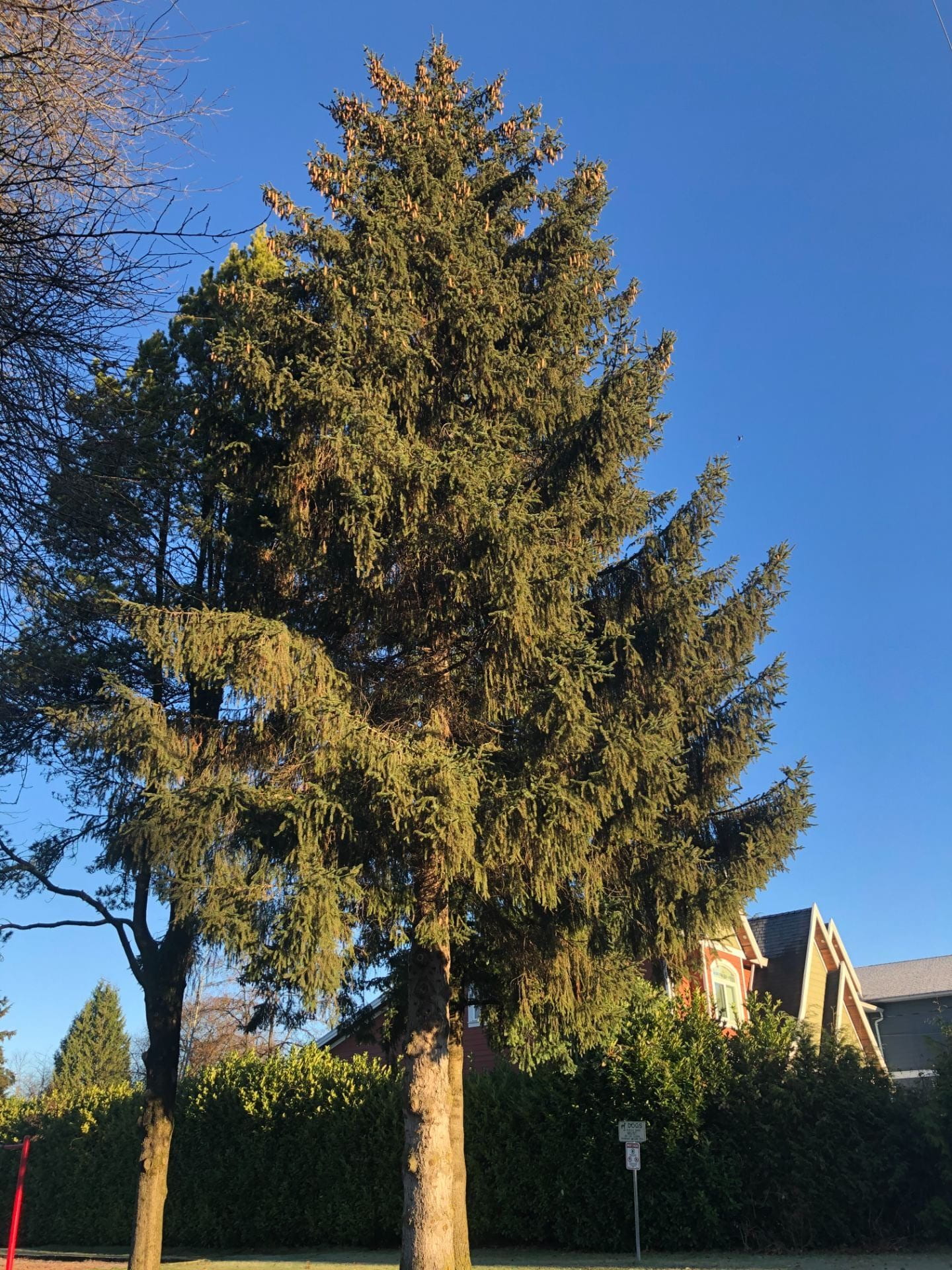
Norway spruce (Picea abies) is very easy to find and identify. It has the largest cones of any spruce tree, usually 10-15 cm long, and cascading branchlets that remind me of someone holding out their arms with chains dangling.
Like the Sitka spruce, I would recommend you look for the cones, twigs, and needles on the ground to find this tree.
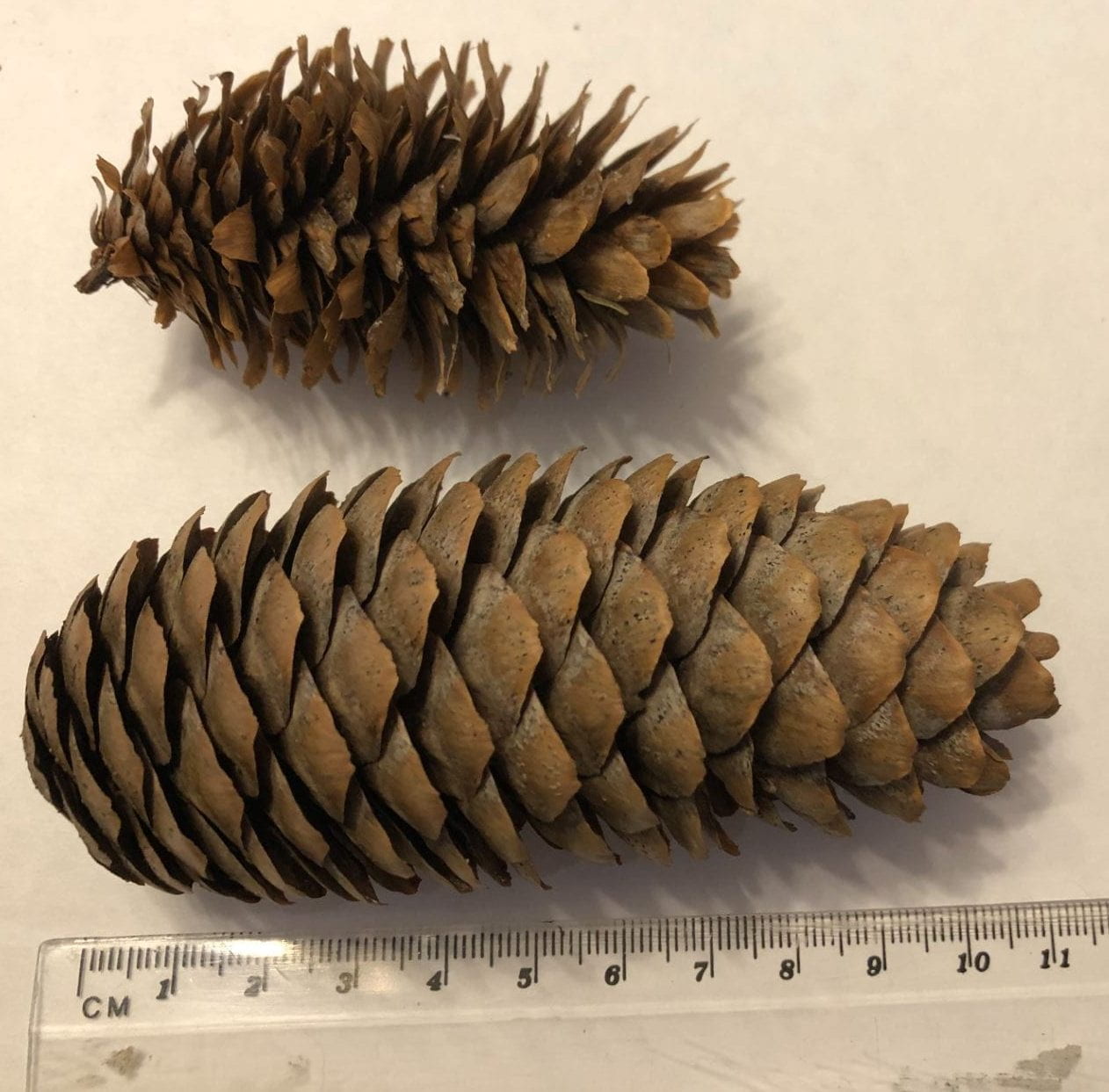



After you have found some Norway spruce cones, look up for the scaly bark and hanging branchlets.




I’ve noticed while driving lately that the Norway spruce cones are very bright next to the dark green needles so you can likely identify these common introduced (non-native) trees from far away. You may also find some other spruce trees: blue spruce is one easy-to-identify species that comes to mind.
So, head outside this first week of 2021, then look both down and up to find yourself the prickly needles and scaly bark of native Sitka and non-native Norway spruce trees.
Books I used:
“Picea abies” and “Picea sitchensis.” Vancouver Tree Book: a Living City Field Guide, by David Tracey, Pure Wave Media, 2016, pp. 58-59, 65.
“Sitka spruce.” Native Trees of British Columbia, by Reese Halter et al., Global Forest-Pure Science, 2003, p. 52.
“Sitka Spruce.” Plant Technology of First Peoples in British Columbia, by Nancy J. Turner, Royal British Columbia Museum, 2019, pp. 87–89.
“Sitka spruce” Tree Book: Learning to Recognize Trees of British Columbia, by Roberta Parish and S. M. Thomson, Canadian Forest Service, 1994, pp. 68-71